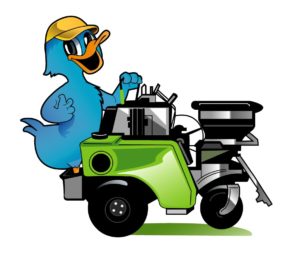Broadleaf Weeds And How We Control Them.
The Goal Is Broadleaf Weed Control
Most homeowners dream about having a beautiful lawn. A well maintained lawn can make a home stand out from the neighboring houses. It can increase the value of a home up to 15 percent. One of the biggest issues that a homeowner faces in the pursuit of a showpiece lawn are broadleaf weeds. 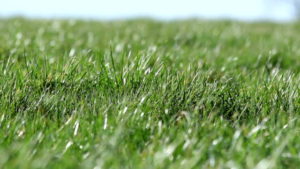
Today, we are going to discuss broadleaf weeds. Some of those will be easy to control annuals, some will be hard to control perennials. There are going to be winter weeds, spring weeds and summer weeds. No matter what type of broadleaf weed we are facing, the objective is always the same. To rid the lawn of them and do what it takes to keep them out.
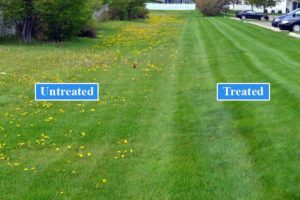
What Am I Up Against?
Types of weeds during Midwestern cool season:
We will start with hard to control weeds. These are typically going to be perennial weeds. They grow from a taproot, and oftentimes spread rhizomatously. They can also spread thru tubers and seeds. Oftentimes, these plants have developed measures that protect them from our control efforts, But with the use of specialized selective herbicides, we can gradually establish control.
Wild violets have evolved to produce waxy coatings on their leaves. This is a way for the plant to conserve moisture and protect itself from disease. It also has the added benefit of slowing the uptake of foliar herbicides.
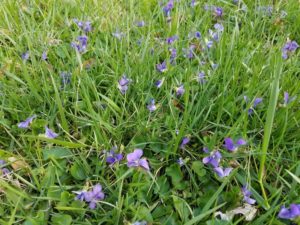
Ground Ivy has developed a much different approach to self preservation. It spreads thru an extensive network of rhizomes, each with the capability of rooting at the node. This means that a part of the plant can take damage without affecting the entire plant. Which means that if your foliar weed control application is not thorough, you may see ground ivy bounce back and thrive.

The way we deal with these hard to control weeds is thru our choice of herbicide and our timing of treatment. By using an ester based selective herbicide, and treating in the spring and fall when temperatures are cooler, we tend to see much better results. This is because in the spring, the plant has not fully developed that waxy coating on its leaves.
In the fall, we see that the plant is translocating nutrients to the root, and our foliar herbicides will travel along with them and kill the plant from the root up. You will see in this next slide, a 14 day comparison after treating a heavy infestation of what appears to be Black Medic, a low trailing annual that is often confused with white clover.
Easy steps to control broadleaf weeds:
We will break them down into two categories; annuals and perennials.
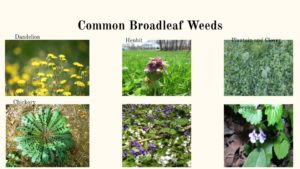
Annual Broadleaf Weeds:
Bull Thistle-Actually a Biennial, it forms large infestations along trails and roadways and in vacant fields. Plant grows erect with spiny leaves and stems. Purple or maroon flowers top the spiny branches.
- Burnweed-A low growing, freely branched winter annual that grows rapidly, producing spine-tipped burrs in the leaf axis.
- Purslane-often confused with Spurge. A summer annual that prefers compacted soils. Yellow flowers bloom from May thru September on hot sunny days.
- Spurge-Red or purple stems with opposite, oblong leaves. Grows in a prostrate clump in warm soils along sidewalks and flowerbeds or in thin areas of turf.
- Knotweed-A prostrate summer annual that is commonly found in pathways and other high traffic areas. Small white or pink flowers grow between the stem and the alternating, oblong leaves.
- Horseweed-A winter or summer annual that can reach 6 feet tall. Features alternating leaves with slightly toothed margins. Small white, pink or yellow flowers top the central stem. Has developed a resistance to glyphosate in some regions of the US.
- Groundsel-Single stemmed with branched upright growth. Yellow flowers that bloom year long. Prefers cool, rich, moist soils and can be a summer or winter weed.
Perennial Broadleaf Weeds:
- Beggarweed-A creeping perennial that features pink flowers. It develops a large, branching taproot that can sprout new stems.
- Black Medic-This prostrate plant can be annual or perennial. Prefers stressed and compacted lawns. Often confused with white clover because of the similar leaf structure. Produces small yellow flowers
- Canadian Thistle-a creeping perennial with spiny leaves and an extensive rhizome system that can be up to 3 feet long, Purple flowers bloom in June-September.
- Curly Dock-a taproot perennial with wavy leaves. Flowers begin as green clusters that become a reddish brown as they mature. Prefers wet areas
- Dandelions-bright yellow flowers that become puffballs at maturity, Long hollow stems and jagged hairless leave. Grows all summer long.
- Red Clover-A cool season perennial that grows from a fibrous root system. Round pink to purple flowers grow on many stalks.
What Does It Take? How Do I Get There?
The success of a foliar application has a lot to do with how it is applied. It must cover the plant’s leaf tissue with enough herbicide mix to be absorbed. There are multiple ways this can be achieved, each with their own benefits and drawbacks.
For spot applications, where broadleaf weed density is light, we can use a hand can or a backpack sprayer. This gives us the mobility and flexibility to move around the lawn and only treat what is needed. For an all over application on smaller properties, properties with steep hills or small gates a hose rig is typically used. It allows you to take a large quantity of mixed product out onto a lawn and apply both fertilizer and weed control with broad coverage.
For larger properties, a turf machine gives you the versatility to apply both fertilizer and weed control at the same time. Because it has both a boom sprayer and a hand wand, this unit also gives you the option of spot or full coverage application. It also holds a larger quantity of liquid product than a hand can or backpack sprayer without the limitations of being tethered to a truck like a hose rig.
How Do I Know That treatment Is Working?
The indicators that we see from successful application are going to be the same as well, although factors such as cool temperatures and drought conditions will slow the control time down significantly from a range of 3 to 7 days all the way out to 21 days before we see results.
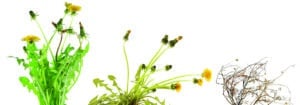
Lets take a look at and discuss those indicators that tell us that our treatment is working like it should. One of the first signs that we will see is a curling of the stems and a rippling wilt in the leaves. This may not be plainly obvious to a homeowner. This is typically within a few days of treatment, but can be as early as a day later in certain weeds and conditions.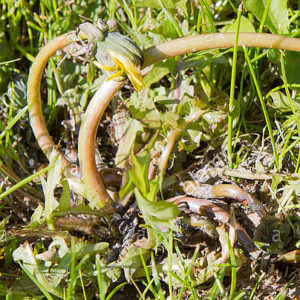
The second stage indicator is going to be a significant decline in vitality. Leaves are wilted, flowers have closed up and stems are drooped or curled. And lastly, we see that the plant has lost its battle and is not much more than a skeleton. This will usually decompose or be chopped down and mulched up by the mower.
Another indicator that will often tell us that we have been successful in our application is a discoloration of the leaves, from green to a red or purple color. This tells us that the plant has lost its ability to produce chlorophyll. Chlorophyll is the key ingredient in a plants nutrition. 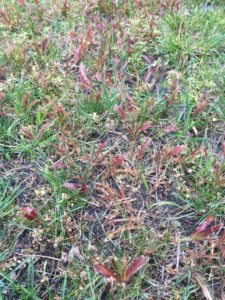
No matter which choice of application method your specialist might choose, the key is consistency. Applying the proper amount of the right product at the right time and in the right place. Doing so will allow your specialist the ability to transform a lawn from a weedy mess into a place of beauty and give you that feeling of pride in your lawn and home.
In addition to our fertilization services, we also offer mulching, fertilization, and aeration – just about any service necessary to keep lawns green, lush, and healthy all year long. Call us today at (317) 748-3153.
